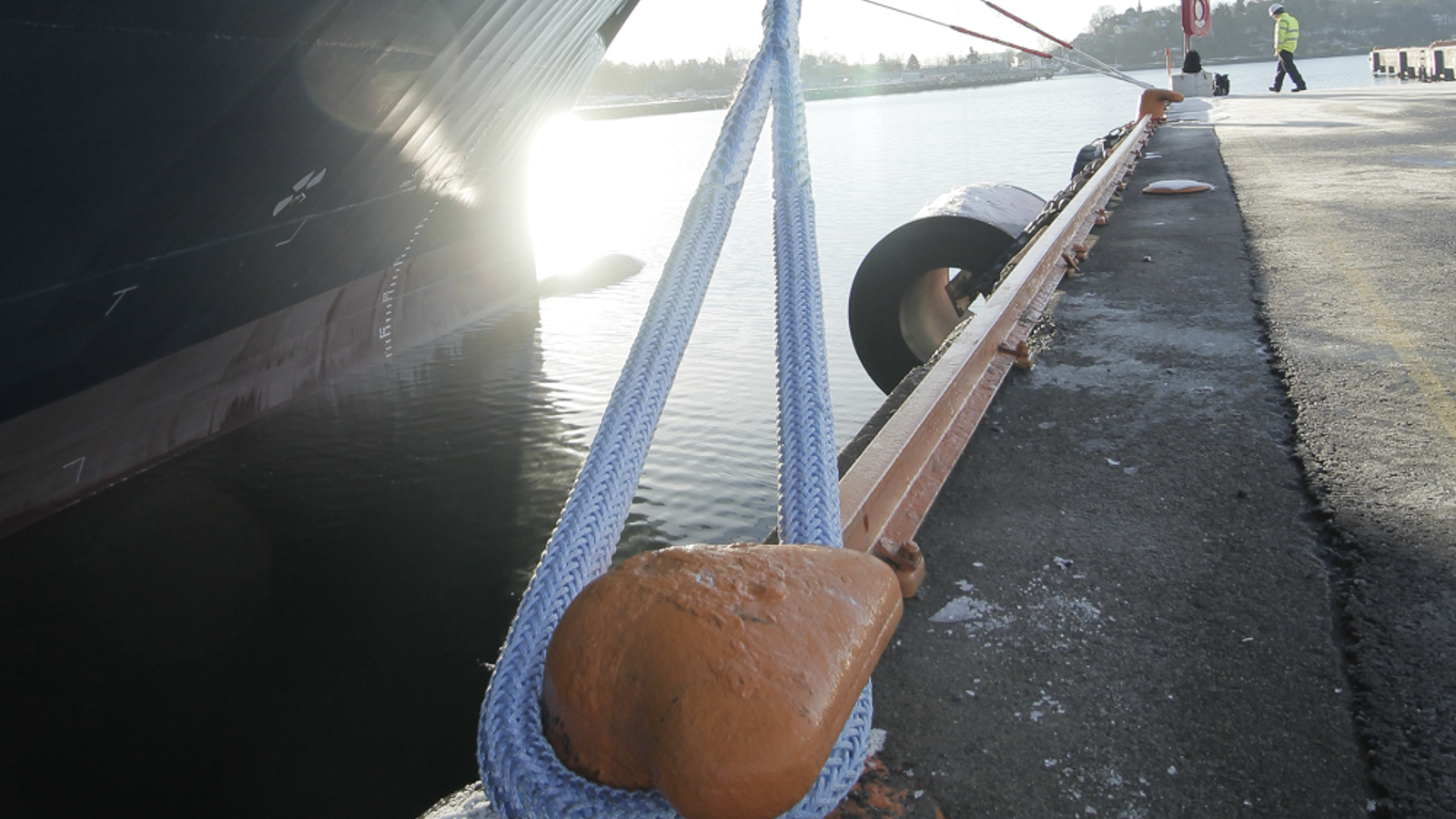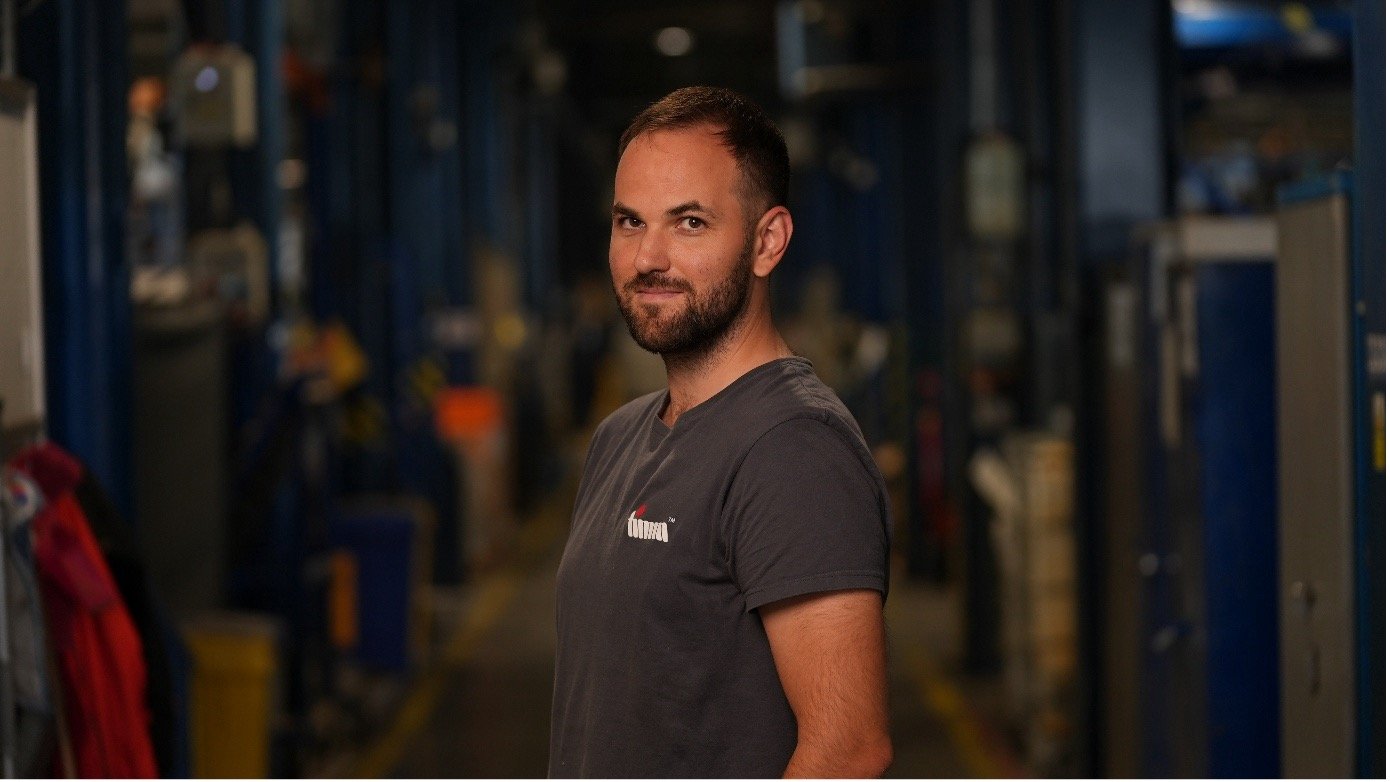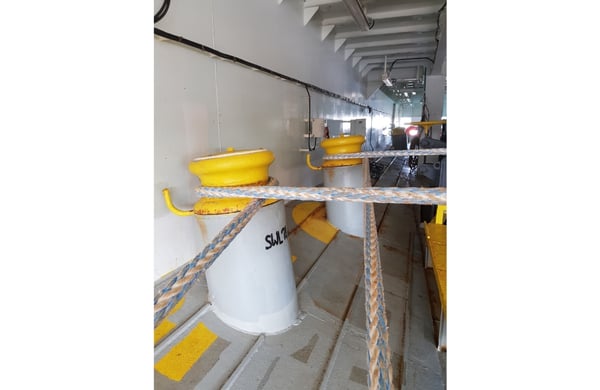Let an expert guide you to overcome your mooring challenges

威尔森观察
|
Andrej Babrnak, Technical Product Manager - Mooring & Towing Solutions

Challenges in mooring operations
Mooring ropes must be treated as integral parts of a complete system comprising both hardware and rope, necessitating compatibility to function safely and efficiently.
Mooring ropes can no longer be treated as stand-alone components; the entire mooring system (hardware + rope) must be compatible and function as a unit. If ropes don’t match the ship’s winches and fairleads — or meet the narrow strength range — they wear out faster, can snap under load, and put crews in danger. In addition, the risk of sudden line failures rises sharply with improper setup, unbalanced tensioning, lack of maintenance and incompatible replacements, mixed-age hardware, rough handling, etc. Since 2018, the entire deck area has been considered potential snap-back zone, requiring updated signage, training, and heightened crew awareness
At the same time, quick rope visual checks aren’t enough; a rope can look fine but be too weak to trust unless you track its every use and keep the logs of complete lifespan. Without clear records and regular training, crews struggle to spot when a line has reached the end of its safe life, so that any potentially fatal accident, injuries, delays, and costly replacements can be avoided.
|
Ensure enough room on tension drum
|
Ensure enough room on storage drum
|
|
Frequent rope failures
|
Snap-back risk across the deck
|
|
Inspection and maintenance complexity
|
Inspection and maintenance complexity
|
|
D/d ratio issues
|
Who faces these challenges and why it matter?
Mooring safety affects everyone involved with a vessel from ship owners and operators to fleet managers, procurement teams, designers, and crew. It is a shared responsibility, but the challenges and impact vary across roles:
Ship owners and operators are accountable for compliance with the new IMO SOLAS Circ. 1619 and Circ. 1620 standards. They must now maintain a Mooring System and Line Management Plan that proves every rope matches the ship’s hardware and is inspected and logged throughout its lifecycle. Failure to comply risks regulatory penalties and reputational damage.
For newbuilds on or after 1 January 2024, the stakes are higher: winches, fairleads, and lines must be designed and maintained as a package. They must be maintained in accordance with new IMO SOLAS standards. Furthermore, organizations such as RightShip have additional requirements that can be more stringent than the IMO standards.
Fleet managers, superintendents, and procurement teams are responsible for daily logistics and managing operational complexity. They must source compatible ropes, manage inspections, and maintain detailed records. The tighter standards mean more administration, more coordination, and less room for error. Support from a reliable rope manufacturer and the use of a digital line management plan can help alleviate this burden.
Crews and officers on deck face the most immediate risks. The decisions made far upstream would directly impact on the crew managing the lines on deck during mooring operations. If ropes are mismatched or degraded, they are the ones exposed to snap-back injuries and operational delays.
This requires that crews receive comprehensive training, shipyards and designers collaborate on rope and hardware selection from the outset. Additionally, this requires operators to maintain detailed records for every rope, including end-for-end procedures and retirement thresholds. Relying solely on visual inspections is insufficient, as such checks may not indicate when a line has been reduced to less than 75% of its original strength.
Newbuild designers, shipyards, and naval architects must now design mooring systems as integrated packages. If they don’t align winches, fairleads, and ropes from the start, owners face costly retrofits and crews bear mooring safety risks from unsafe setups.
How Wilhelmsen Ships Service closes the gap
Our total mooring solution package - rope products, digital tools, technical advisory and documentation support - provide peace of mind for ship owners and operators. Our Timm™ ropes come with safety features such as built-in Snap-Back Arrestor (SBA™) technology that reduces dangerous snap-back and anti-twist colour for easy identification of twist indication and safer handling.
To make documentation easier for ship operators, our cloud-based Timm Line-Management Plan (LMP™), a digital logbook can easily track every rope’s hours, moves, and wear so crews no longer guess when it’s time to rotate or retire a line.
Our global network of mooring specialists are always available to support on-board inspections to assess lines, run residual-strength testing, splice or repairs, and improve crew product knowledge in line with the SOLAS and MEG4 standards.
For newbuilds, we collaborate with designers early to select ropes compatible with each winch and fairlead and continue to support installation and initial crew training. This minimises last minute changes and ensures the system works as a whole. The result is fewer line failures, improve deck safety, and helps the ship crew with simpler compliance.
You may also visit our knowledge base that answers most frequent questions on regulations, best practices for mooring and technical product information. If our knowledge base does not help or you want someone to talk to, feel free to reach out to us.
Our mooring expert is here to help you
Hello, I’m Andrej Babrnak, Technical Product Manager based in Trenčín, Slovakia.
 I have over 17 years of experience working with mooring ropes, beginning my career on the production floor where I obtained practical knowledge in rope manufacturing and performance. Over time, I advanced into a role as an R&D specialist, allowing me to develop extensive expertise that informs my approach to addressing challenges within the field of rope technology.
I have over 17 years of experience working with mooring ropes, beginning my career on the production floor where I obtained practical knowledge in rope manufacturing and performance. Over time, I advanced into a role as an R&D specialist, allowing me to develop extensive expertise that informs my approach to addressing challenges within the field of rope technology.
My core focus is on mooring ropes, where I specialize in technical aspects, data analysis, and digital solutions that enhance safety and operational efficiency across maritime operations. A key part of my role is ensuring that our solutions are fully compliant with international regulations, including OCIMF MEG4, SOLAS, and SIRE 2.0 standards.
Get in touch with our experts
Other relevant articles:
- An overview of the regulations and guidelines governing mooring lines
- Why improper mooring tail selection compromises safety
- The hidden costs of rope chafing and how to avoid them
- Why using unverified anti snap-back solutions can be a serious threat to safety in mooring operations
- Digital rope management with all-in-one LMP application
- Navigating through new mooring guidelines






